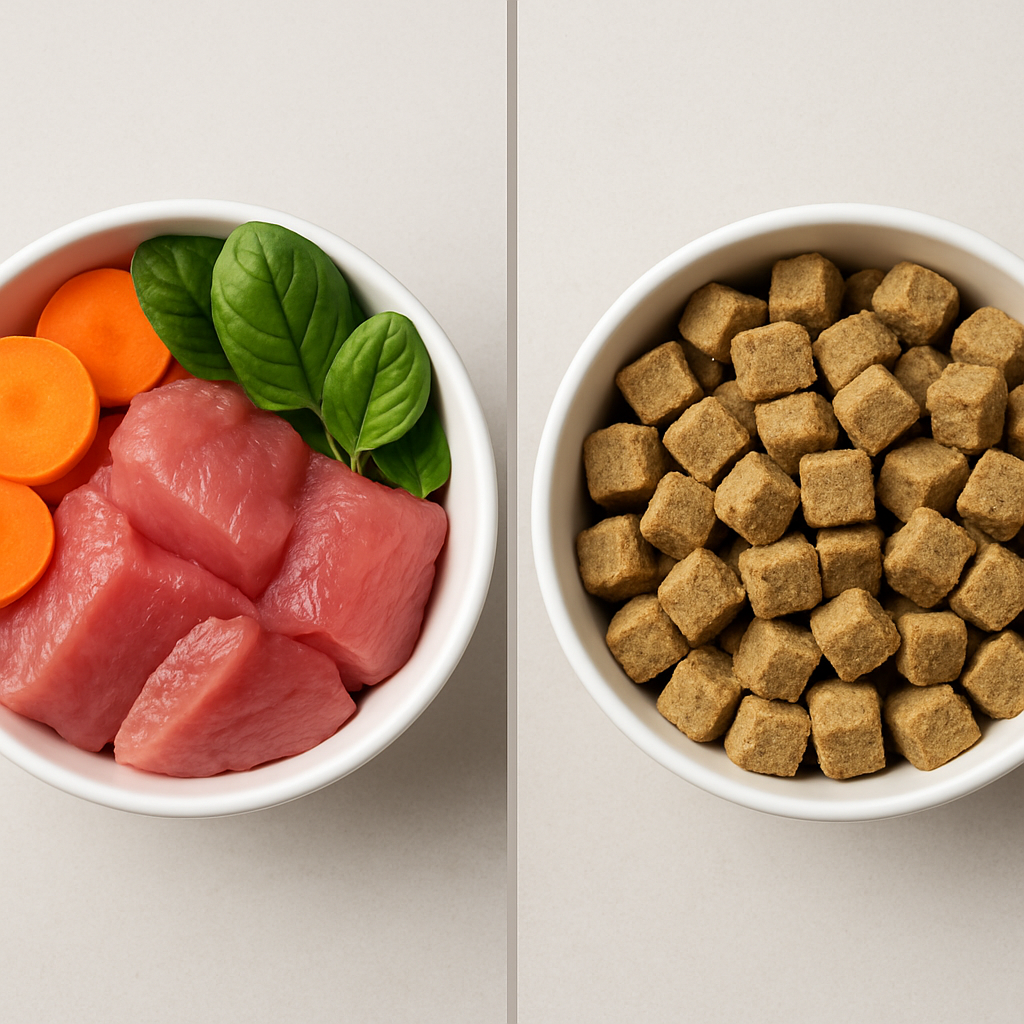Raw vs. Freeze-Dried Pet Food: Which Is Better for Your Pet in 2025?
Share
The conversation around pet nutrition has shifted dramatically, with a growing number of owners seeking diets that are minimally processed and packed with nutrients. This has pushed two premium categories to the forefront: raw and freeze-dried pet food. Both aim to provide a diet closer to what a pet's ancestors would have eaten, but they differ significantly in preparation, storage, and convenience. As we look at the landscape in 2025, which one is right for your pet?

The Case for Raw Food
A raw diet typically consists of uncooked meat, organs, bones, and sometimes fruits and vegetables. Proponents point to a range of potential benefits, including healthier skin and coats, cleaner teeth, and improved digestion, thanks to the preservation of natural enzymes. In 2025, raw food is safer and more accessible than ever, with many brands using high-pressure processing (HPP) to eliminate pathogens like Salmonella without using heat, thus preserving the nutritional integrity.
- Pros: Maximum nutrient preservation, high moisture content, promotes dental health.
- Cons: Requires careful handling to avoid bacterial contamination, needs freezer storage, shorter shelf life.
The Rise of Freeze-Dried Food
Freeze-dried food begins as raw ingredients, which then undergo a low-temperature dehydration process that removes moisture while locking in nutrients. The result is a lightweight, shelf-stable product that offers the nutritional benefits of raw food with unparalleled convenience. This process retains the essential amino acids, vitamins, and minerals that can be degraded by the high heat used to make traditional kibble.
- Pros: Excellent nutrient retention, long shelf life, no refrigeration needed, much lower risk of bacterial pathogens.
- Cons: Lower moisture content (requires rehydration), often higher cost due to the intensive manufacturing process.
Head-to-Head Comparison
| Nutritional Value | Excellent; natural enzymes and nutrients are fully intact. | Excellent; retains up to 97% of original nutrients. |
| Safety | Higher risk of pathogens; requires strict safe-handling protocols. HPP helps mitigate this. | Low risk of pathogens due to moisture removal. Safer to handle and store. |
| Convenience | Low; requires freezer space, thawing, and careful preparation. Not ideal for travel. | High; lightweight, shelf-stable, and easy to serve, making it perfect for travel or busy lifestyles. |
| Cost | High, due to premium ingredients and cold-chain logistics. | High to very high, due to the expensive freeze-drying process. |
The Verdict for 2025
Ultimately, the "better" option depends on your priorities. If you are committed to providing the most natural diet possible and have the time and space for safe handling and storage, a high-quality raw diet is a fantastic choice.
However, for most pet owners, freeze-dried food offers the perfect compromise: the nutritional power of raw with the safety and convenience of kibble. It allows you to feed a nutrient-dense, minimally processed diet without the logistical challenges. Many owners are also using freeze-dried food as a high-value topper to enhance their pet's current kibble, providing a nutritional boost without a complete diet overhaul.
